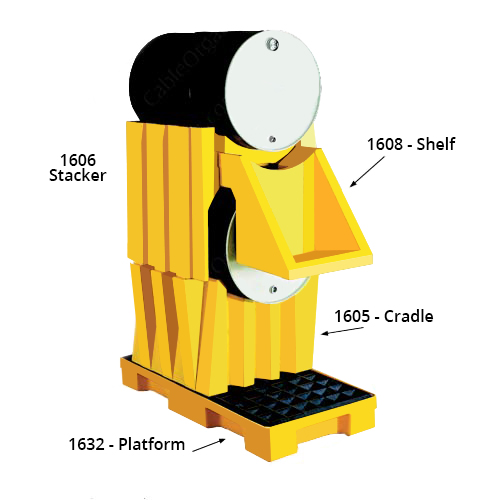
Whether you work directly with high voltage equipment or just employ people who do, it’s vital that you remain constantly aware of the dangers of arc flash, which is when electricity is released into the air as it is traveling between two conductors. According to the Occupational Safety and Health Administration (OSHA), approximately half of all electrical-related workplace deaths are due to arc flash and arc blast explosions. Have you and your employees taken all the steps necessary to work safely and prevent arc blast injuries and fatalities on the job?
One of the most effective ways to reduce the risk of arc blast incidents is to put a thorough and well-informed arc flash prevention program into action. Not sure what that involves or where to begin? Read on for tips on how to get started on the road to arc flash prevention.
1. KNOW YOUR RESPONSIBILITIES
Before beginning or allowing work on high-voltage equipment, know the responsibilities that you have as an employer, worker, and coworker. The highest level of responsibility and liability always falls on the employer, who is charged with not only being fully acquainted with the arc flash risks at hand, but also to provide proper training, Personal Protective Equipment or PPE and tools to employees, as outlined in the National Fire Protection Association’s NFPA 70E.
Qualified personnel need to realize their responsibilities to themselves and their coworkers by always working in accordance with safety practices, using and wearing the full extent of PPE required and provided by their employers, and remaining constantly aware of jobsite conditions and surroundings.
2. CALCULATE YOUR ARC FLASH HAZARD LEVEL
Arc flash risks can vary in both likelihood and potential severity, so one of the first steps in putting an arc flash prevention program into practice is calculating the hazard levels in and around your workplace. This calculation is called a flash hazard analysis, and involves determining and documenting information like system voltages, equipment class, bolted fault and arc fault currents, and arc duration. Once these and additional factors are measured, facility owners can decide on the proper working distance and PPE for each situation.
When performing an arc hazard analysis, keep in mind that accuracy is of the utmost importance, and can mean the difference between life and death for you or your employees. If you’re not comfortable conducting a hazard analysis yourself using the guidelines of NFPA 70E, you can also purchase flash hazard analysis software, or pay for the services of a qualified risk assessment specialist.
3. DE-ENERGIZE CIRCUITS AND EQUIPMENT WHENEVER POSSIBLEDE-ENERGIZE CIRCUITS AND EQUIPMENT WHENEVER POSSIBLE
Because arc flash requires live voltage to even happen in the first place, the best way to avoid an incident is to remove electricity from the equation altogether. As often as possible, de-energize, lock and tag the equipment or circuits to be serviced before beginning work on them. Power should be cut to any device or system that is being worked on, except for rare cases in which it would be more hazardous to de-energize a piece of equipment than to leave it running.
Before resigning yourself or your employees to working on live equipment, be sure that there is no safer way available. In many cases, machinery can be de-energized during off-hours without creating a hazard or disturbing workflow, so try to be creative with work scheduling and backup plans before you resort to working on powered equipment.
4. PROVIDE AND USE PROPER PPE AND ARC FLASH TOOLS
When it comes to arc flash PPE, responsibility lies with both the employer and the employee. While employers are required to provide their workers with PPE and PPE-related training that is appropriate for the arc flash hazards they’ll be dealing with, employees are responsible to use and maintain that PPE correctly; and to ensure that it is free from safety-compromising wear, contaminants or damage before each use.
5. START TRAINING ON ARC FLASH… AND DON’T STOP
One of the most important aspects of arc flash prevention is thorough training for everyone involved, from the electrical workers who are at firsthand risk, to facility owners who face lawsuits and OSHA fines should their employees ever fall victim to an on-the-job arc flash. However, it’s important to remember that arc flash training isn’t a one-shot solution.
While all new employees should receive arc flash education when entering jobs that entail arc hazards, it’s vital that you and your entire staff undergo frequent refresher courses to brush up on risks and best practices; and learn about updates to arc flash-related standards.
6. USE PROPER LABELING TECHNIQUES
Never assume that arc flash hazards will be obvious to the people working on or near them. OSHA and NFPA 70E require that energized machinery and conductors be explicitly labeled with warning signs and instructions so that qualified personnel are not only made aware of potential danger but are also provided with direction on how to proceed as safely as possible.
For additional information on starting an Arc Hazard Prevention Program at your facility, consult the National Fire Protection Agency’s NFPA 70E 2009 standard; and be sure to check out OSHA’s overview of workplace hazard assessment.
Shop at CableOrganizer® for safety equipment including PPE and arc flash equipment.


